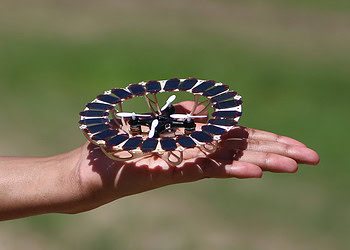Research led by members at the University of California, Los Angeles (UCLA) Samueli School of Engineering has successfully developed a manufacturing adjustment that will prevent perovskite crystals — the active material in thin-film solar cells — from degrading when exposed to sunlight.

The findings pave the way towards solar panels that retain their efficiency over time. This is bound to reduce the operating cost of such panels, making them an even more attractive source of clean energy from an economic point of view. The greater lifespan of the panels would also reduce the need for replacement of such components, meaning less work would be required to run solar farms and cut down on the waste they produce.
In the team’s words, this work removes the biggest hurdle in the way of wide-scale adoption of thin-film solar cell technology.
Solar cells, now sunproof
“Perovskite-based solar cells tend to deteriorate in sunlight much faster than their silicon counterparts, so their effectiveness in converting sunlight to electricity drops over the long term,” lead author Yang Yang, a UCLA Samueli professor of materials science and engineering and holder of the Carol and Lawrence E. Tannas, Jr., Endowed Chair.
“However, our research shows why this happens and provides a simple fix. This represents a major breakthrough in bringing perovskite technology to commercialization and widespread adoption.”
Perovskites are a group of materials whose crystal structure is the same as that of calcium titanium oxides. A particular group of these, known as metal halide perovskites, have great potential in the field of thin-film solar cells. Their main advantage is a lower production cost compared to silicon-based panels, which would help nudge the adoption of solar energy technologies on a wide scale throughout society. They do, however, have a major flaw: as they are now, panels based on metal halide perovskites degrade over time when exposed to sunlight — which is, basically, the job description of a solar panel.
The team identified one step in the production process of such panels that actually works against their life expectancy. One commonly-applied surface treatment used to remove defects in these solar cells and improve their efficiency ends up creating a negative charge on their surface. The researchers explain that this substance unintentionally creates a ‘trap’ for electrons on the surface. Over time, the increased charge in this area destabilizes the atoms of the perovskite, eating away at their efficiency. In other words, this surface treatment ends up destroying the panels as they are illuminated by sunlight.
The solution? Pair the negatively-charged ions in the surface treatment with positively-charged ions. This makes the surface more electron-neutral and stable, they explain, while still allowing the treatment to fix defects on the surface of the material.
In the lab, the team subjected panels treated with their proposed coating to accelerated aging conditions and constant sunlight-mimicking illumination. The cells retained 87% of their original performance for over 2,000 working hours. For comparison, the control panels (which were treated with the traditional coating) dropped to 65% of their original performance over the same time.
“Our perovskite solar cells are among the most stable in efficiency reported to date,” adds Shaun Tan, a Ph.D at UCLA and co-author of the study. “At the same time, we’ve also laid new foundational knowledge, on which the community can further develop and refine our versatile technique to design even more stable perovskite solar cells.”
The paper “Stability-limiting heterointerfaces of perovskite photovoltaics” has been published in the journal Nature.






